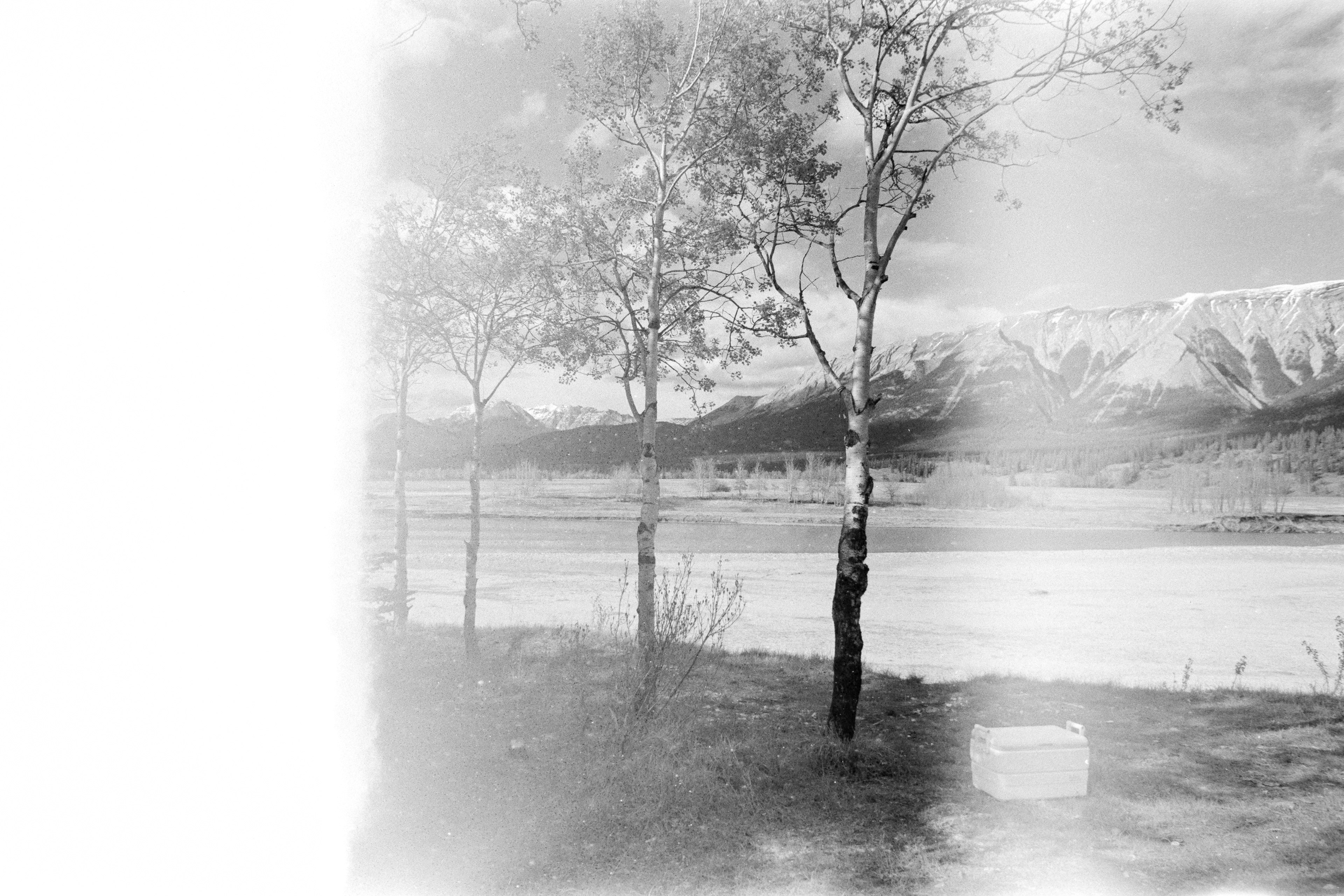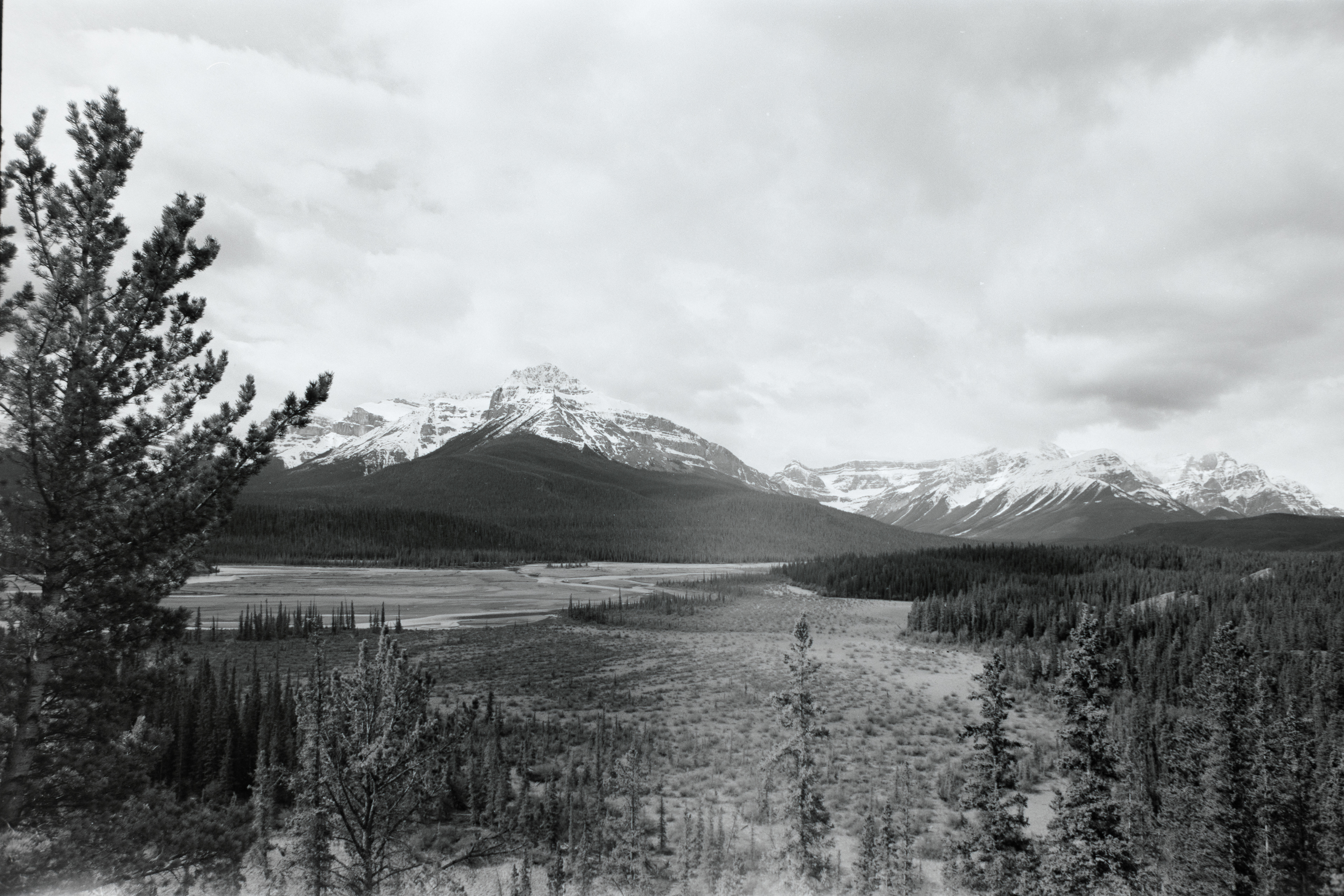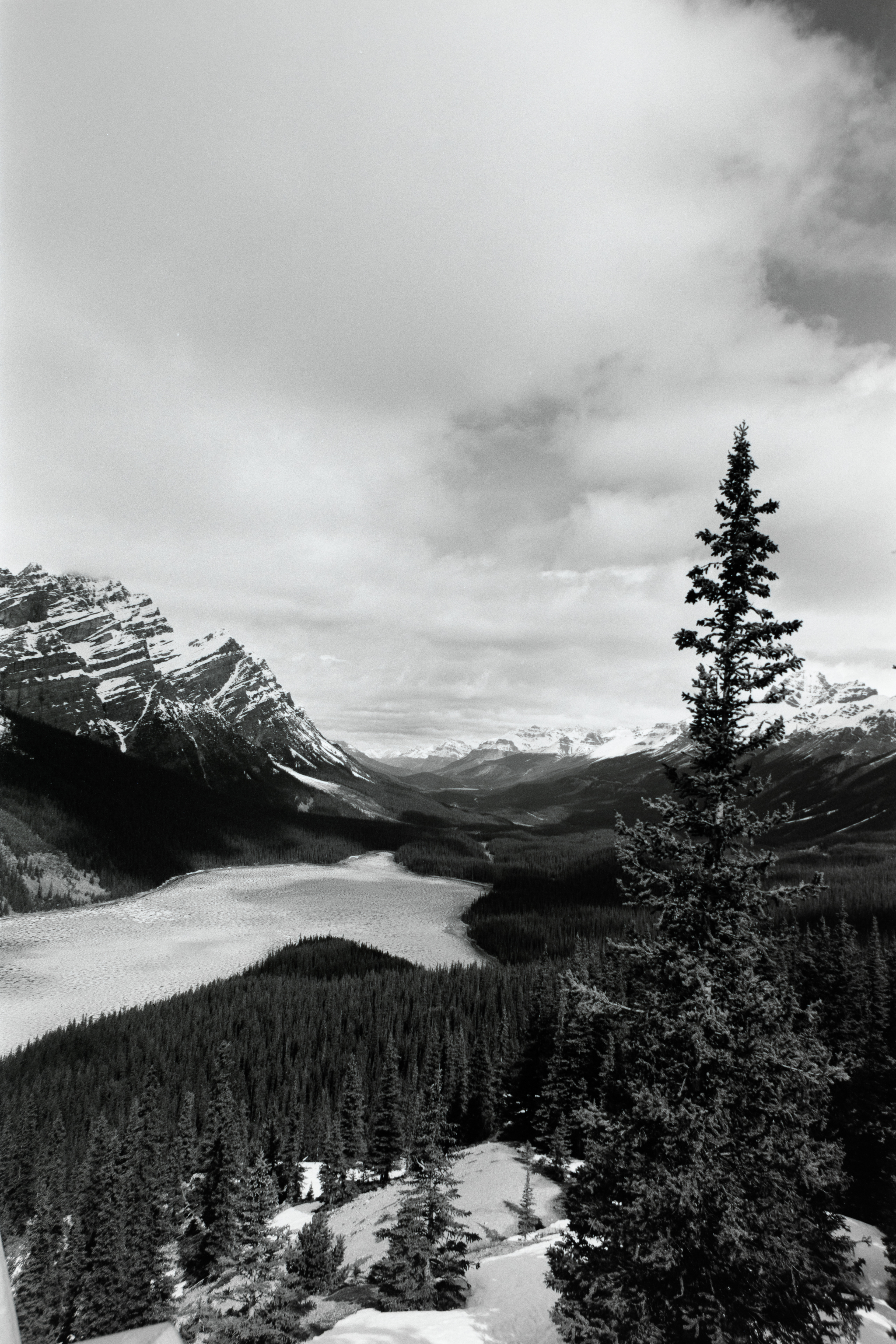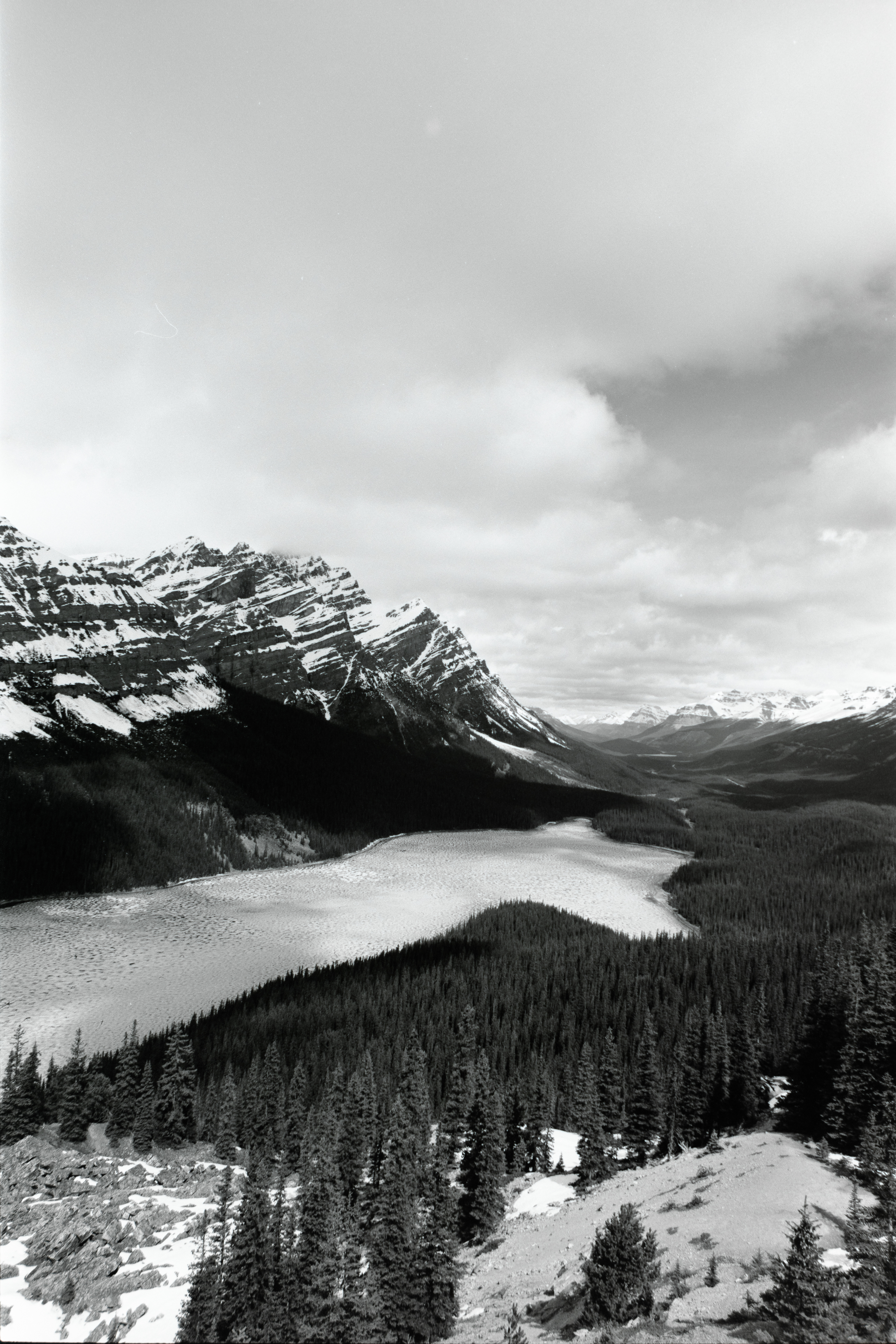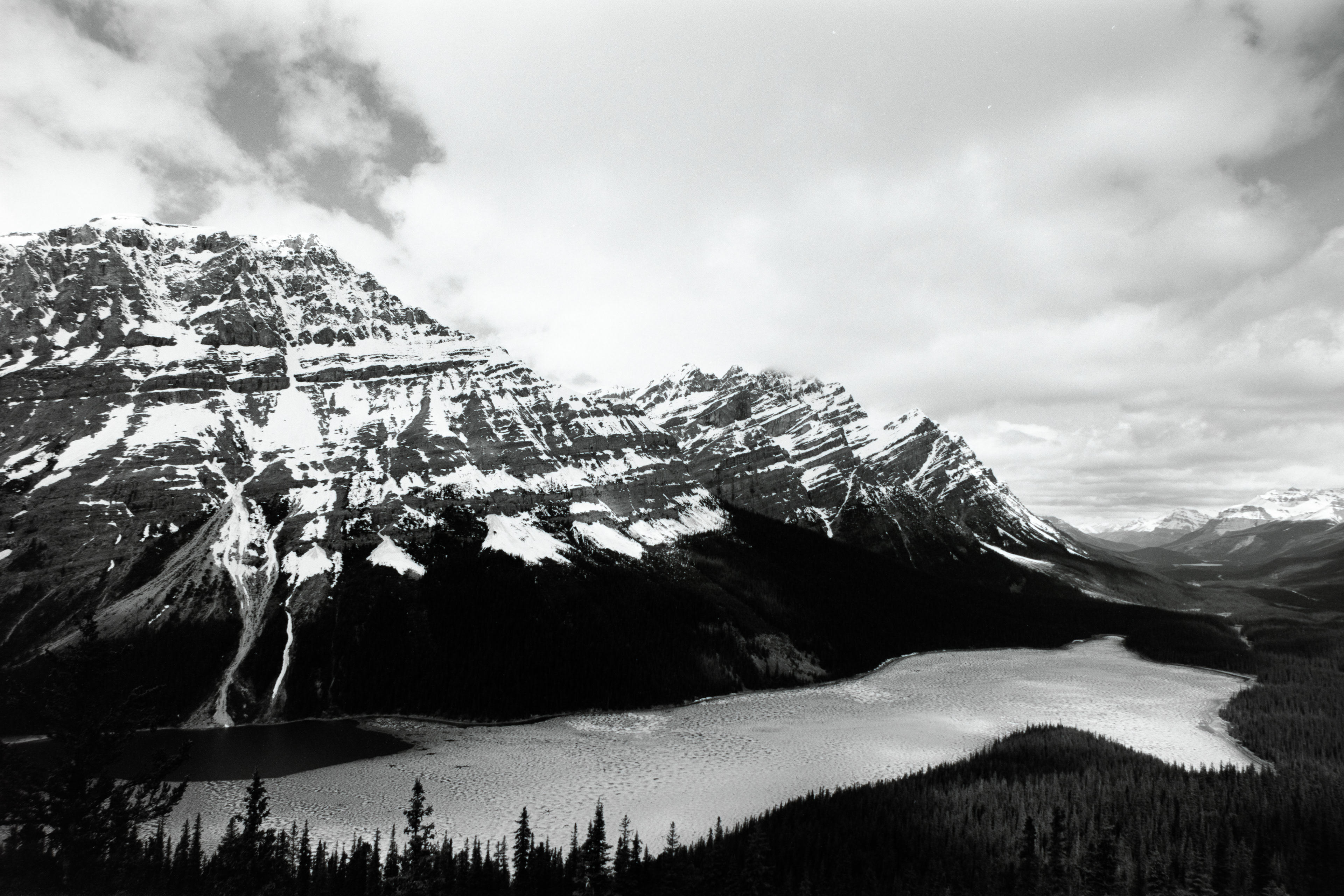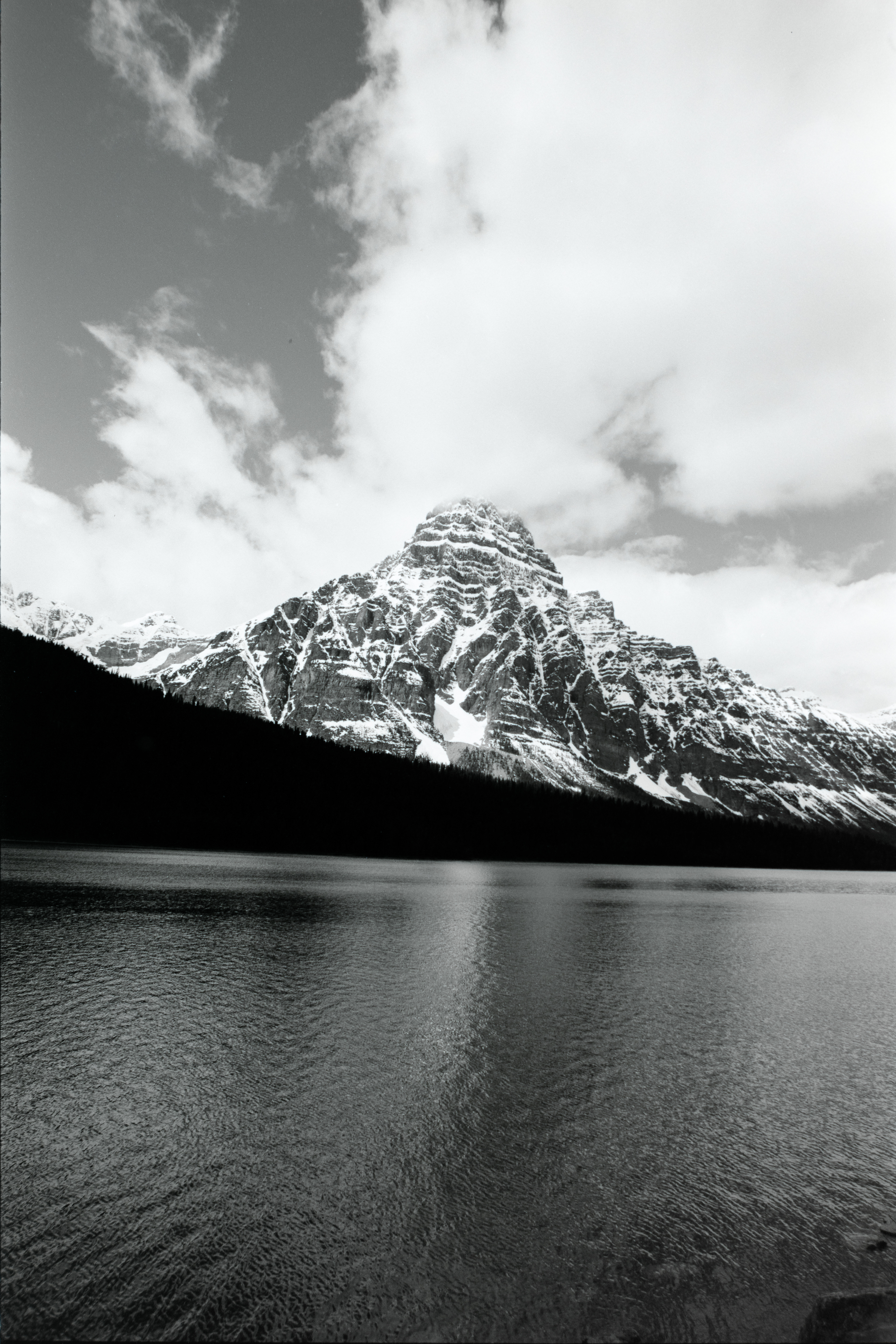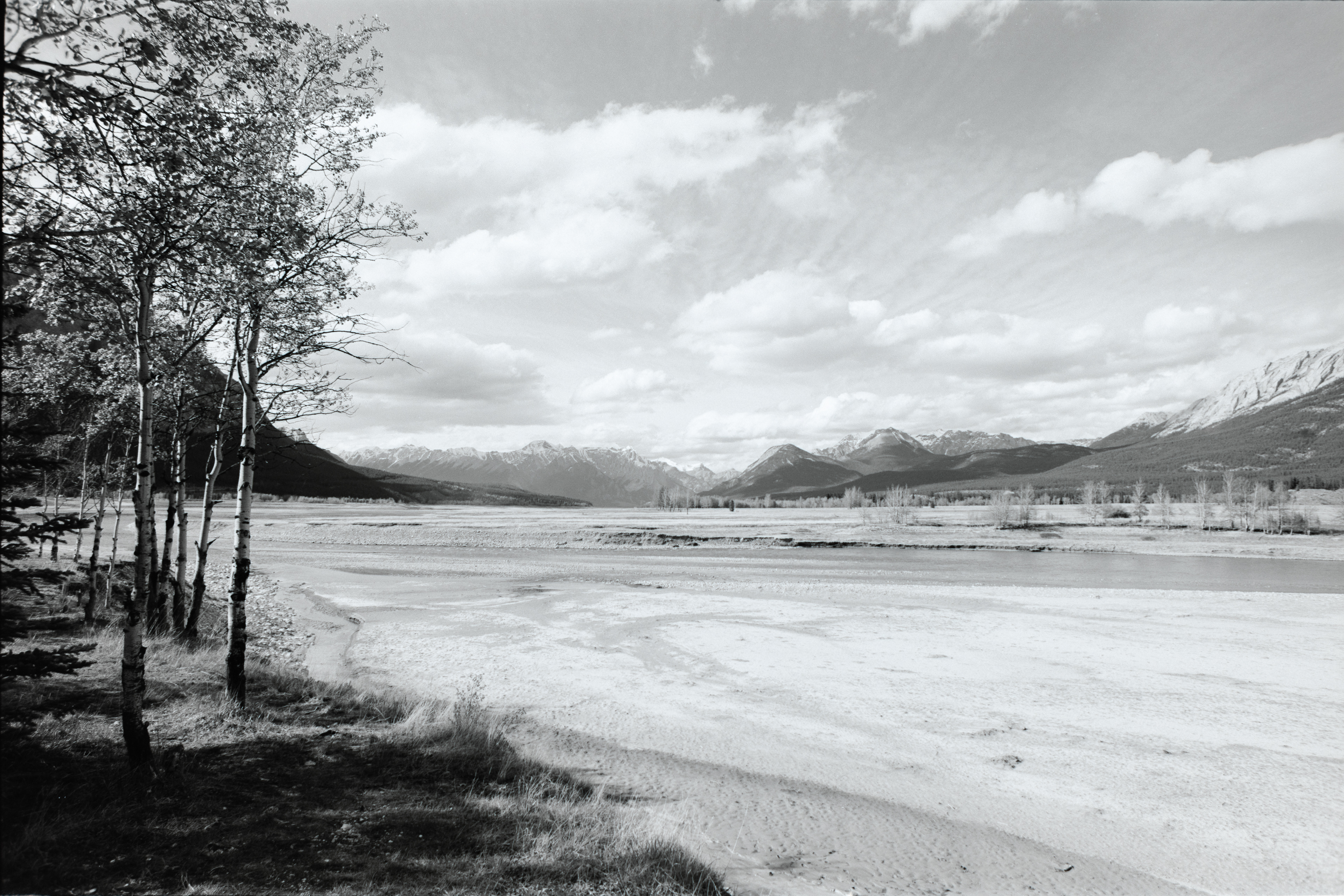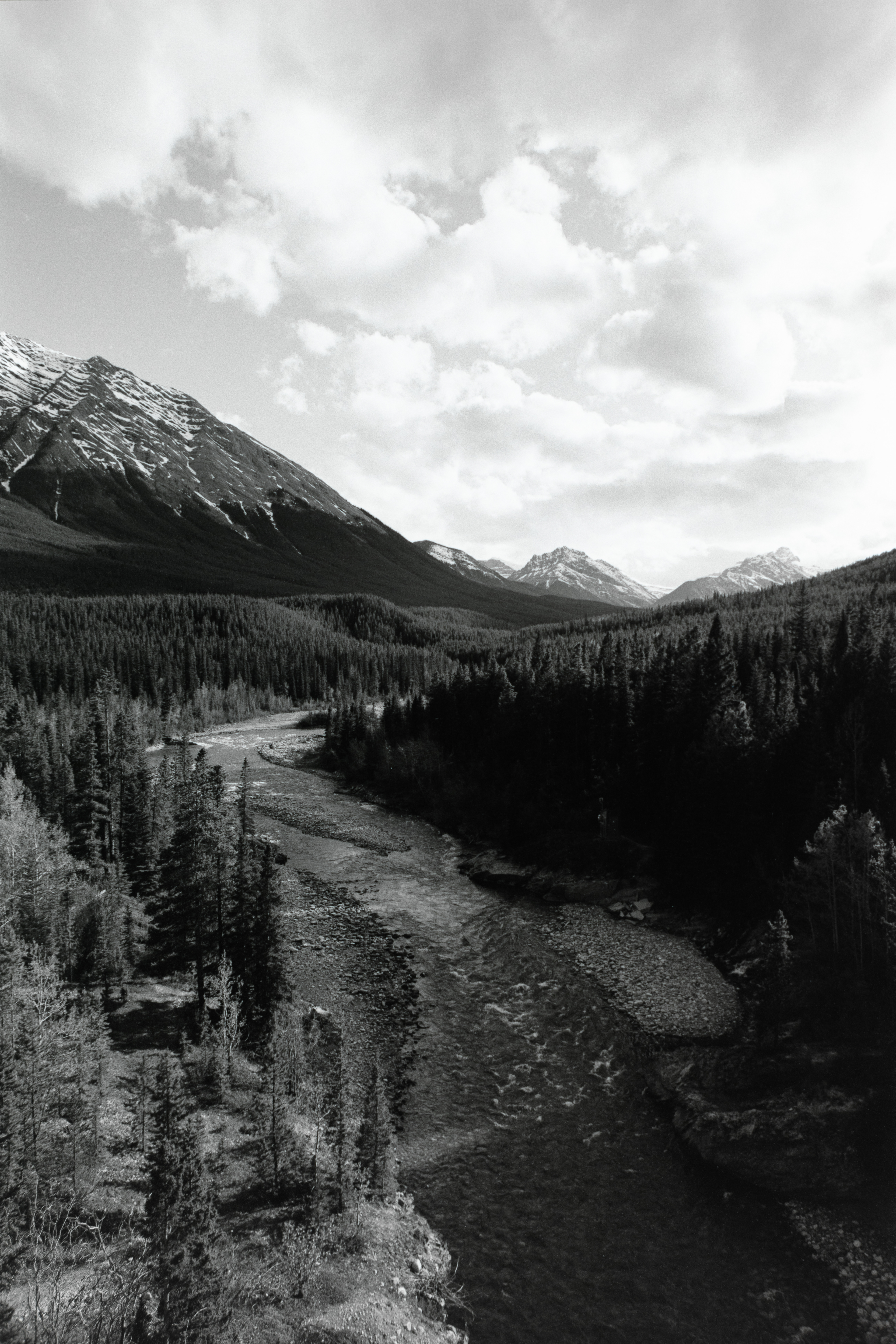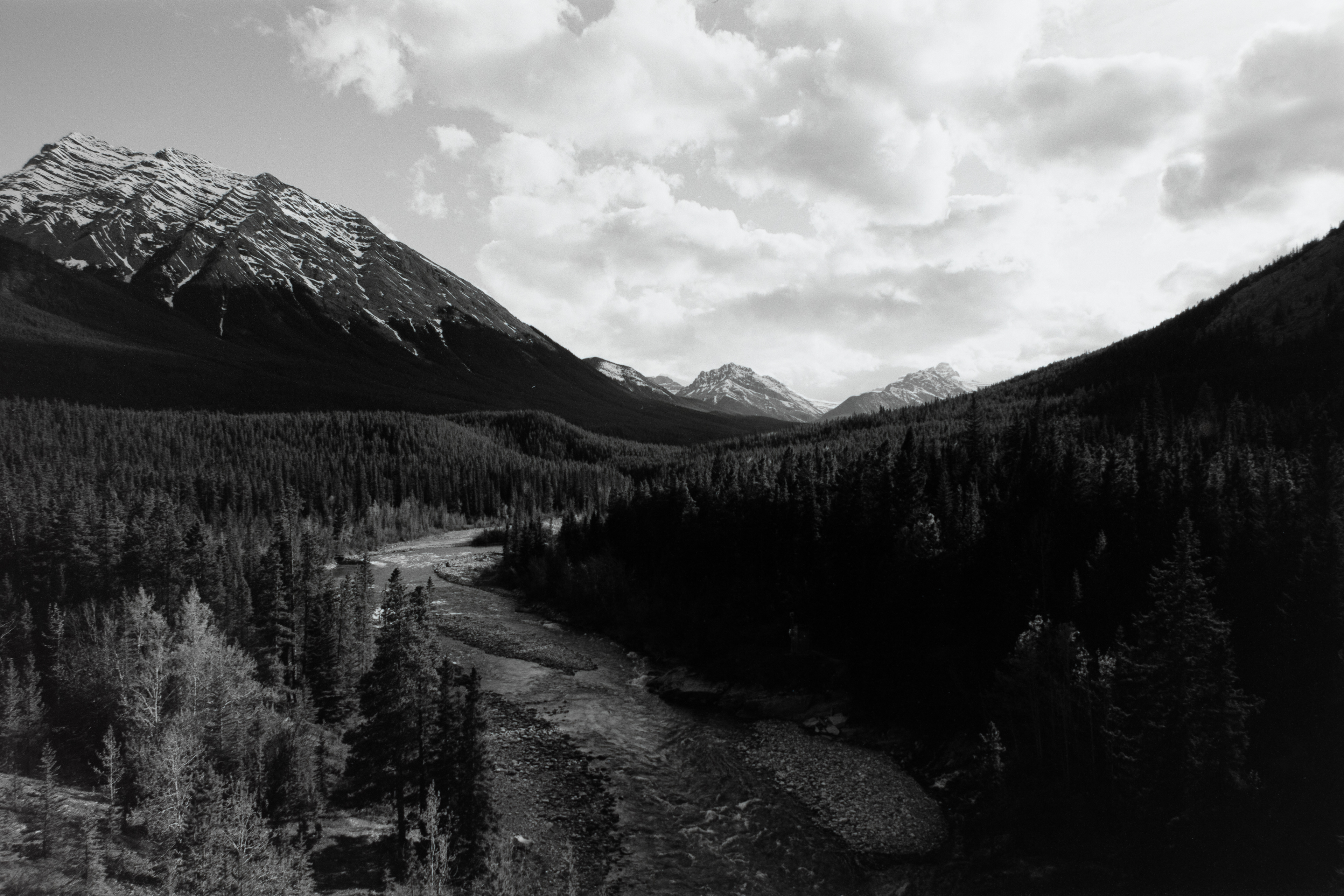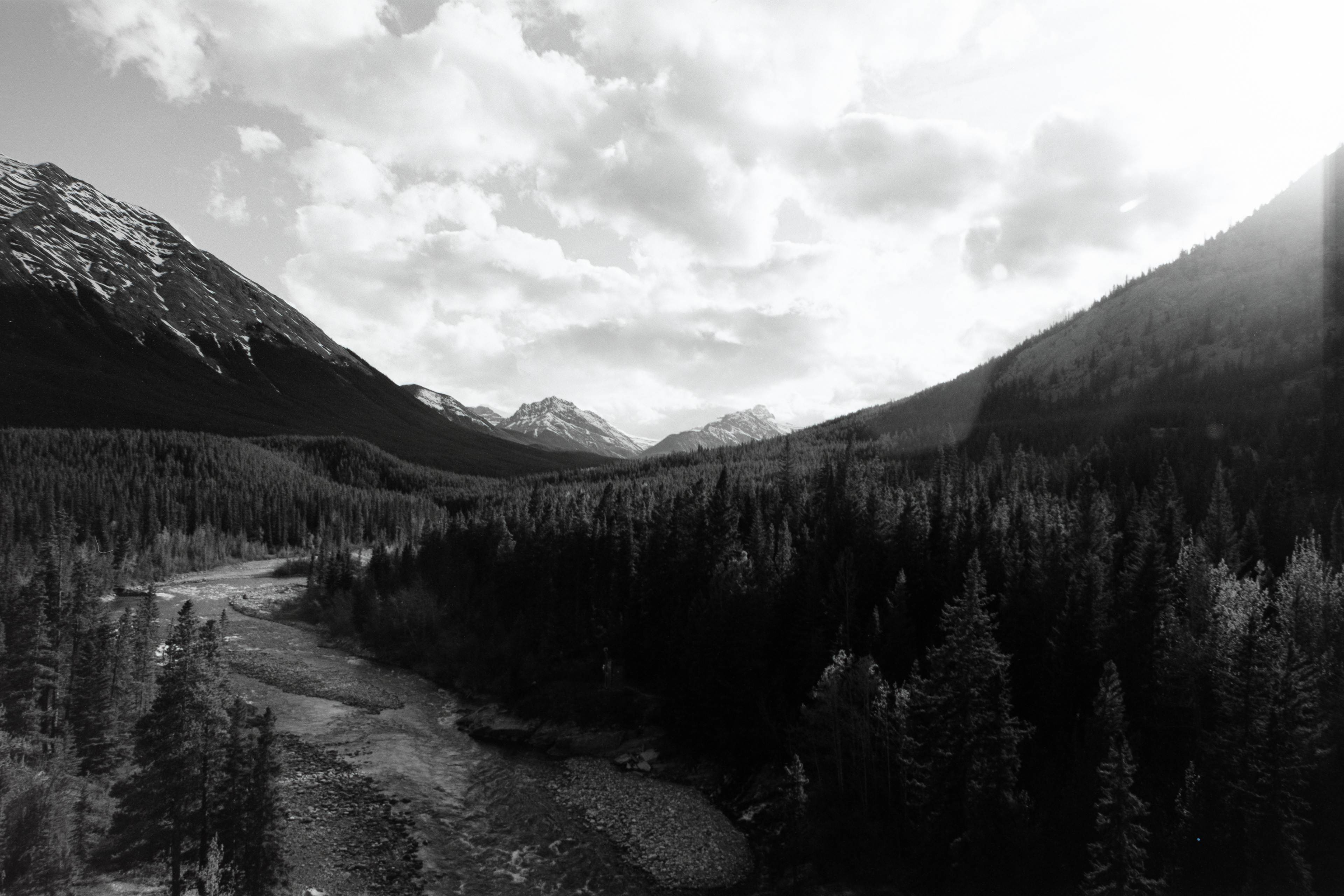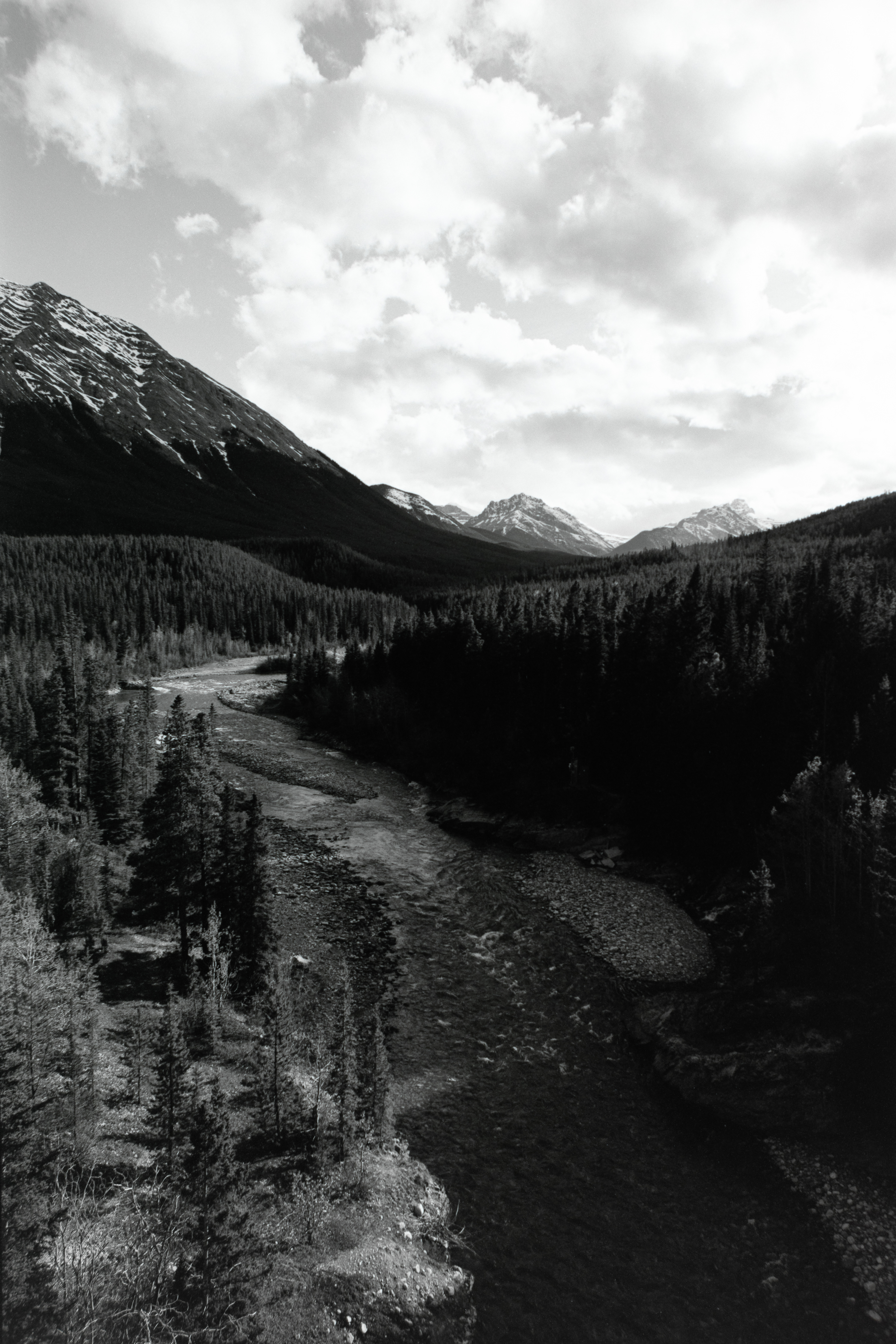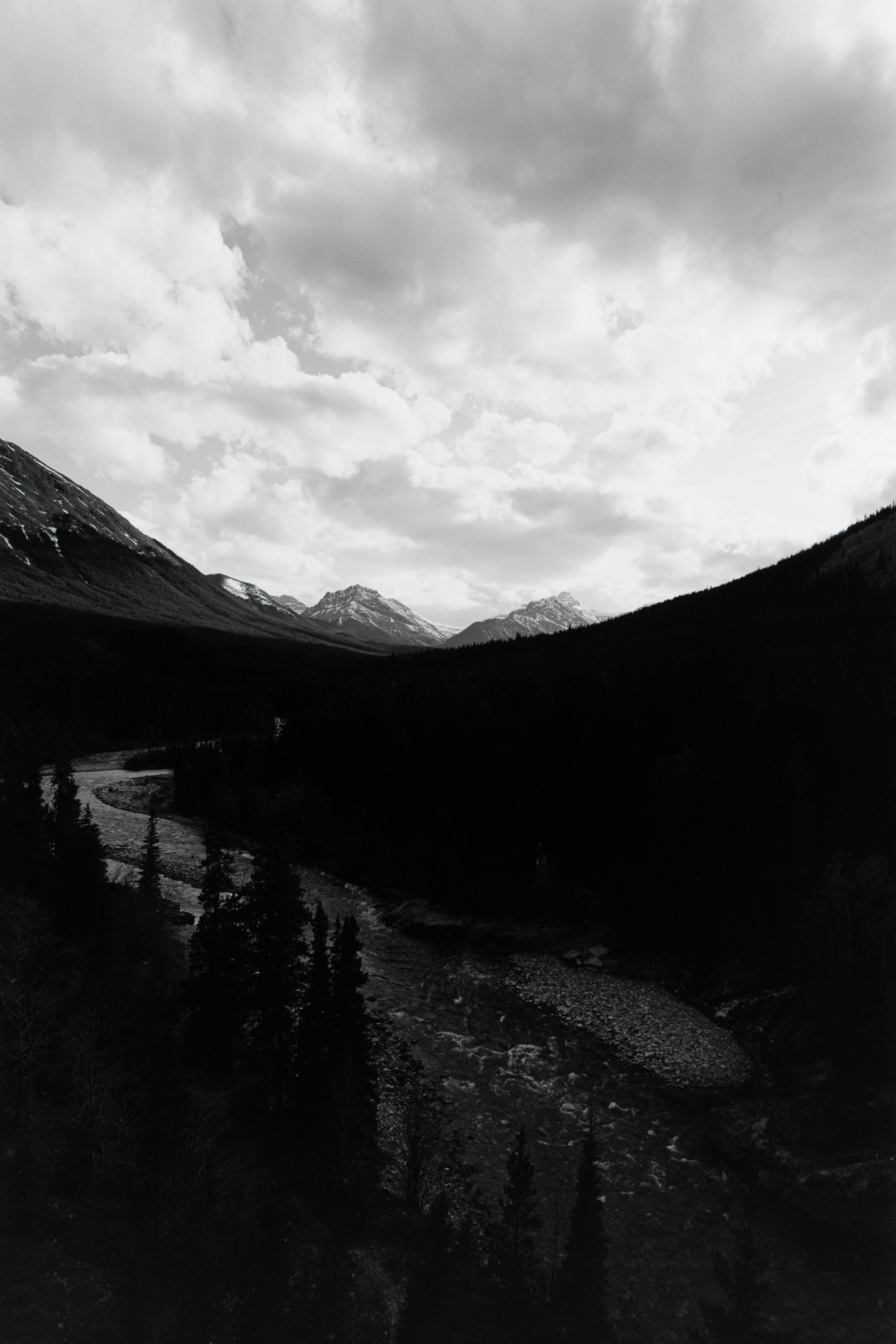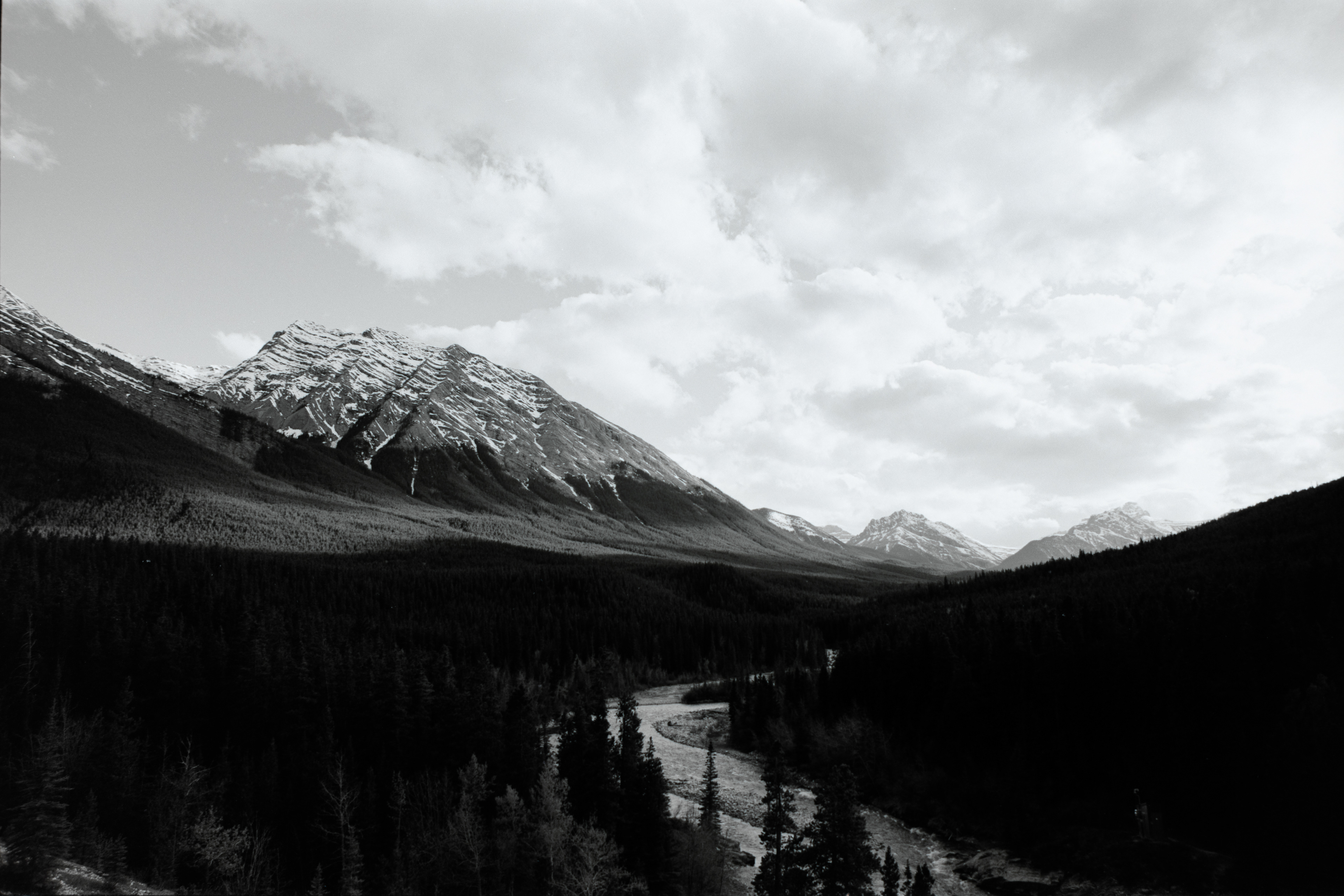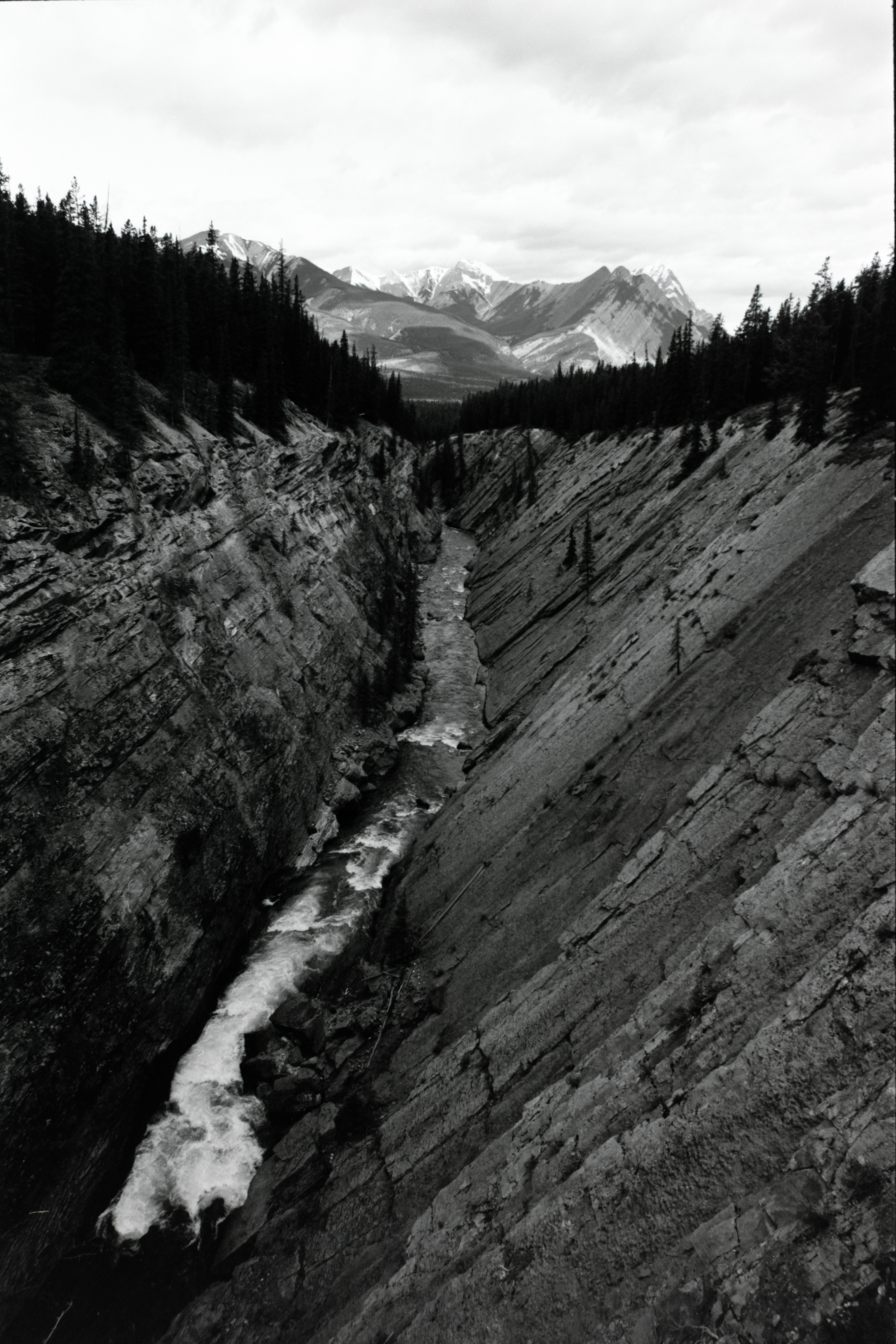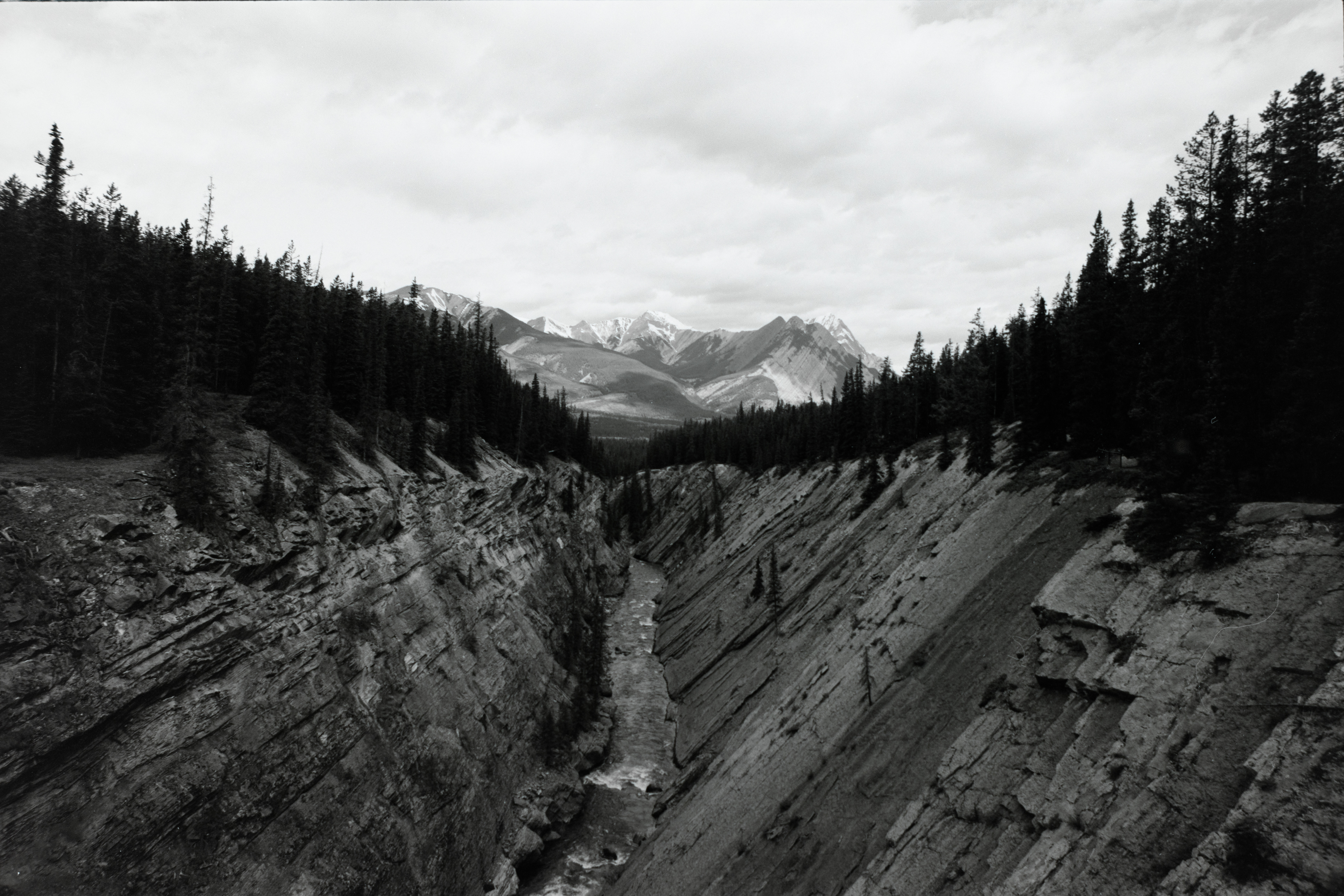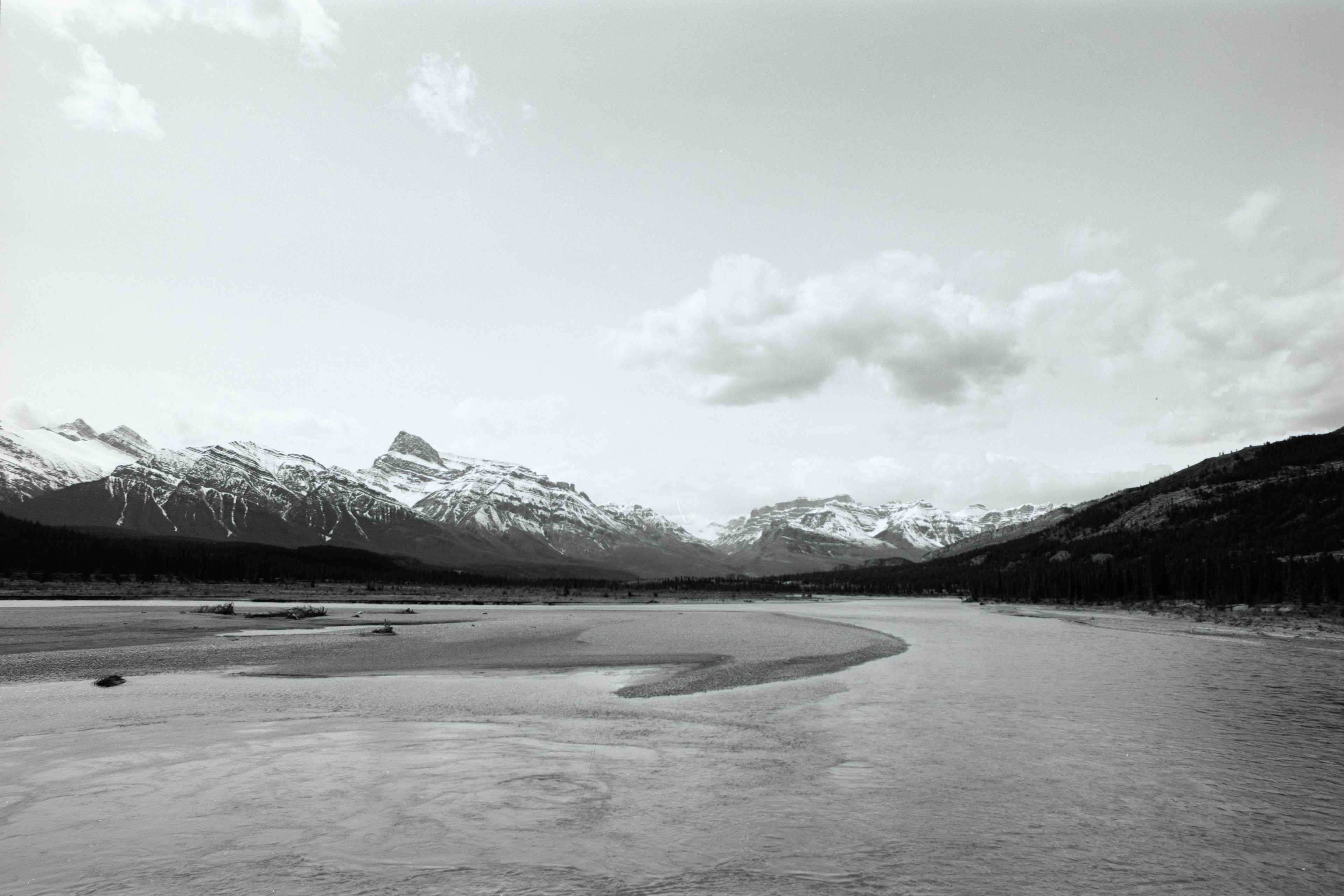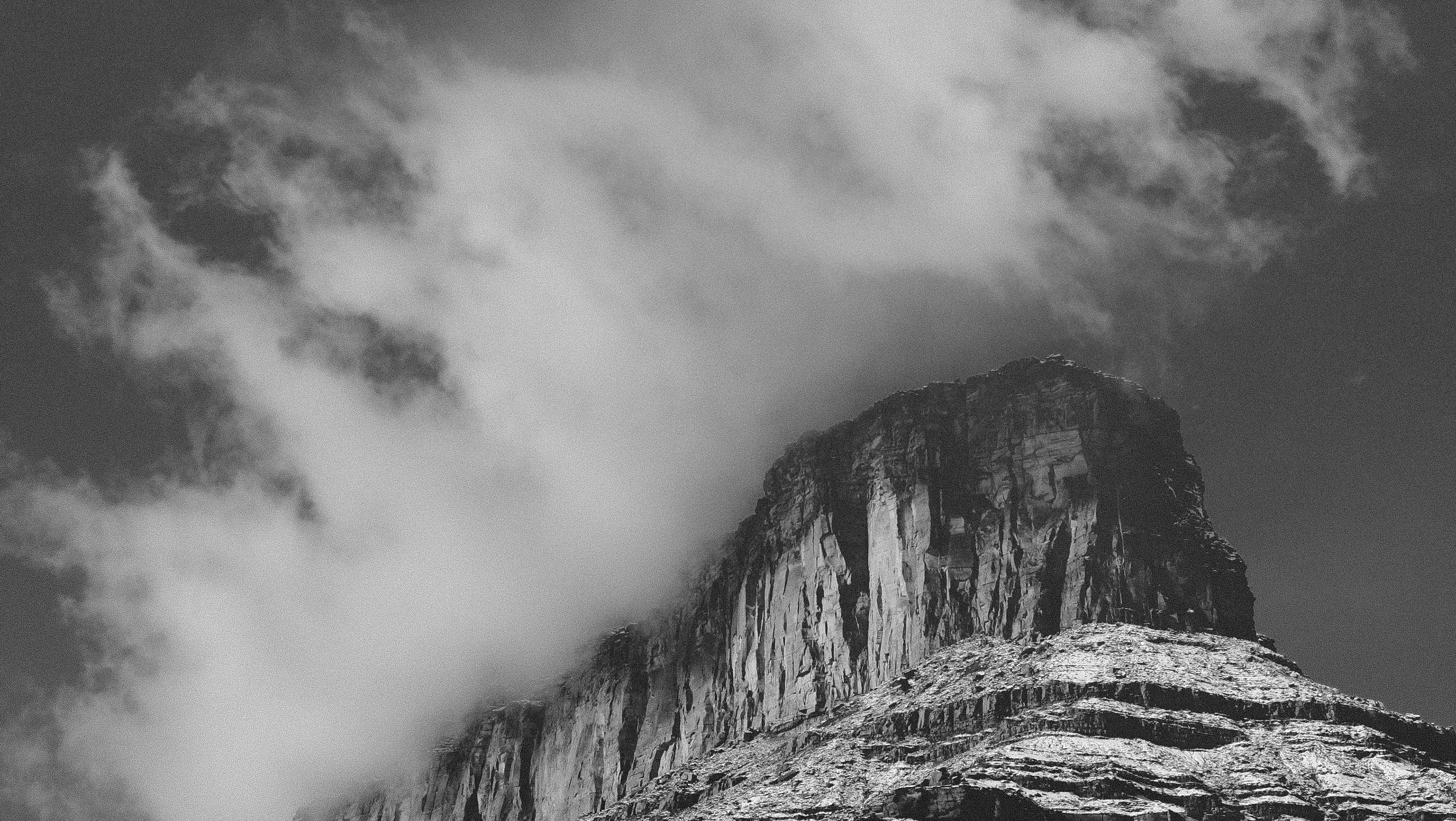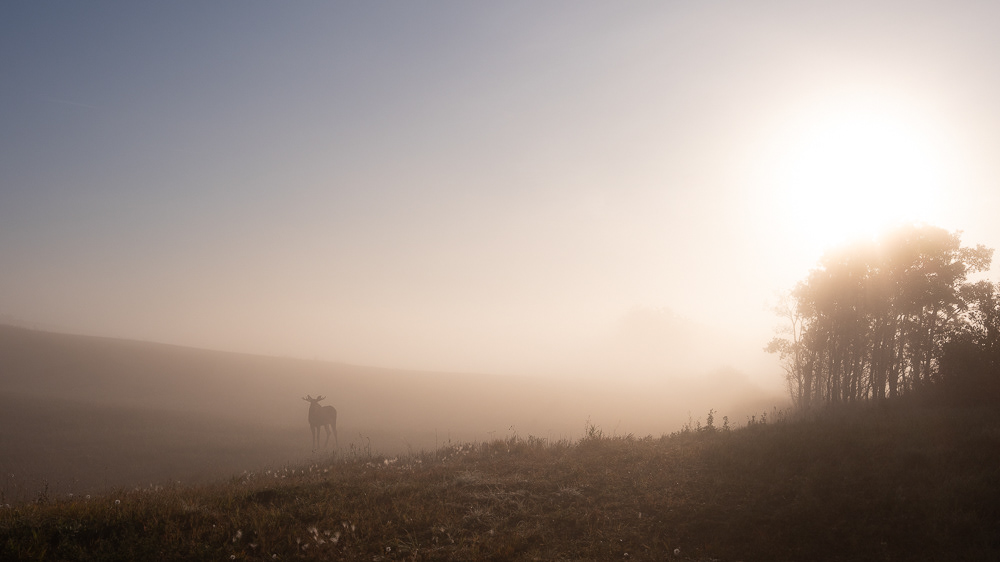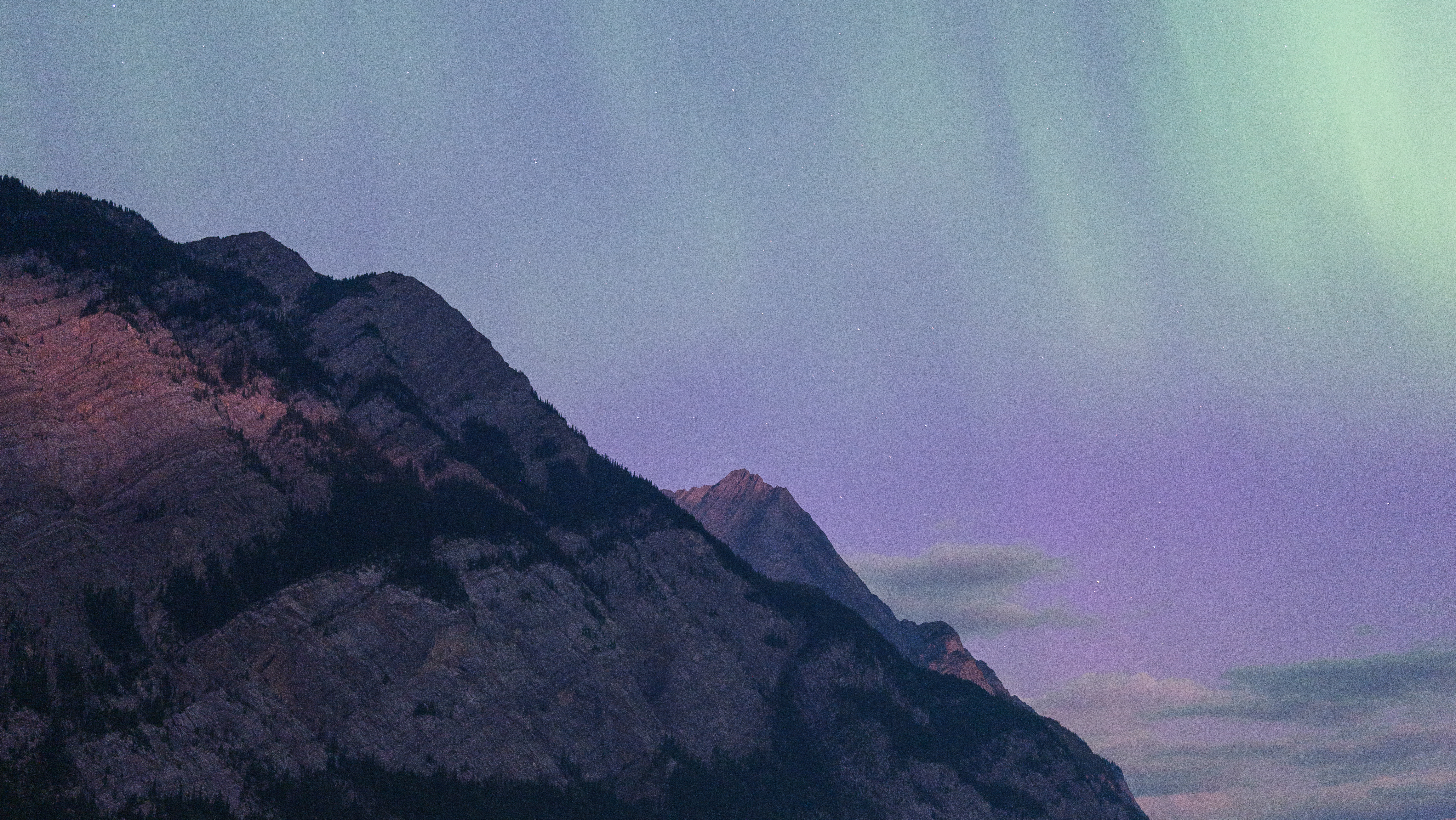At the start of the year, I was purchasing materials for developing and came across a film I hadn't heard of: Adox HR-50. For $7 usd, you get a near infrared, sharp, slow, fine-grain film. Sounds awesome, right? All that was left was to find the right time to test it out.
In May, I had a few days to head out to Abraham Lake and enjoy some camping and hiking. Near to the hustle and bustle of Banff/Jasper, the Abraham Lake region evades nearly all the tourists that visit the national parks. Instead, there's plenty of public land use zones that only require a $30/year pass for unlimited access. There are numerous backcountry campsites, great trails, and plenty of "rustic" campgrounds if you're just car camping like I was. All this with just as beautiful of landscapes as you'd find along the Icefields Parkway or by the more famous townsites. So, it was the right time to test Adox's HR-50 out.
I shot the roll at box speed on my Nikon FM and Nikkor-N.C Auto 24mm f/2.8 - here are a few of my favorite images from the roll:
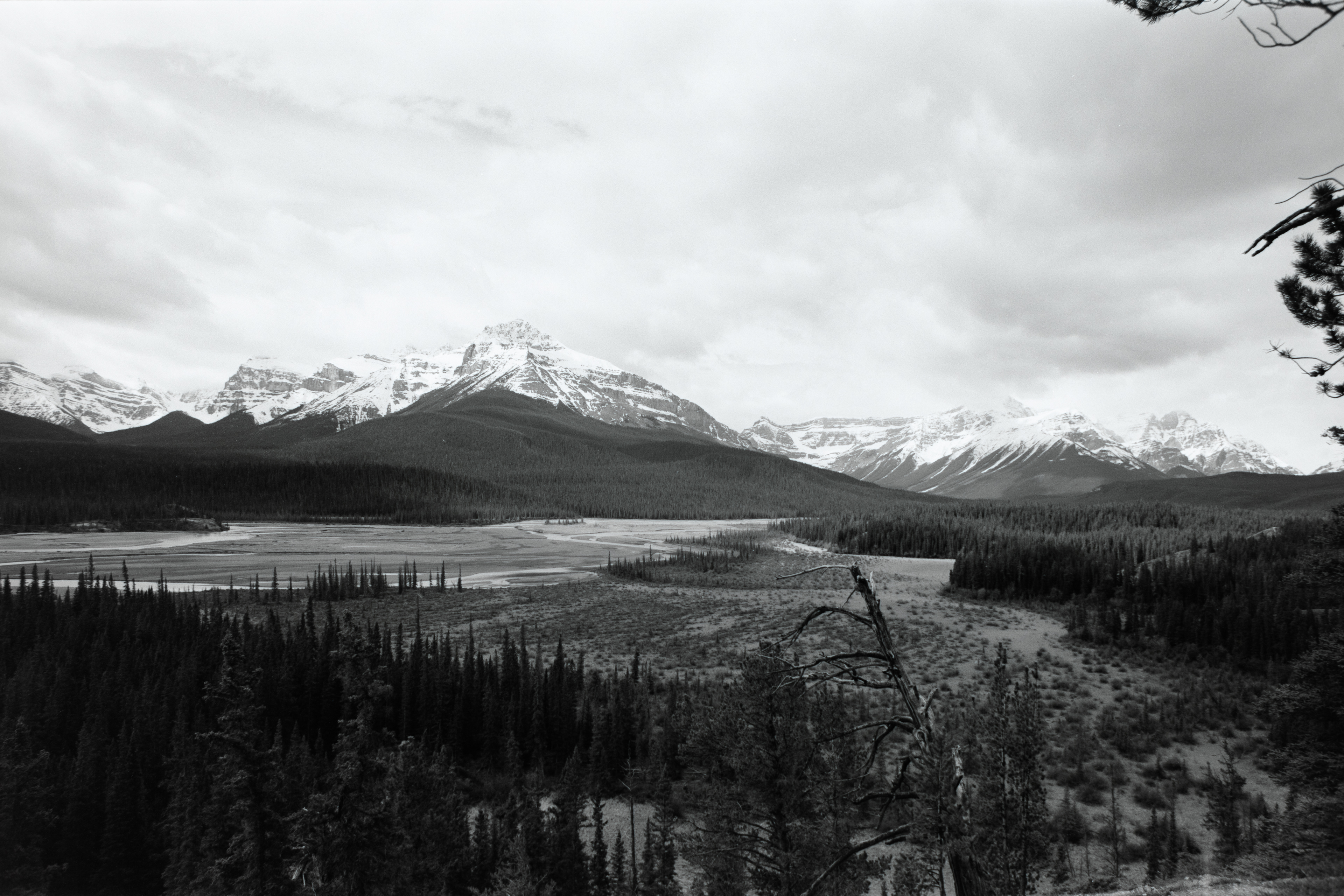


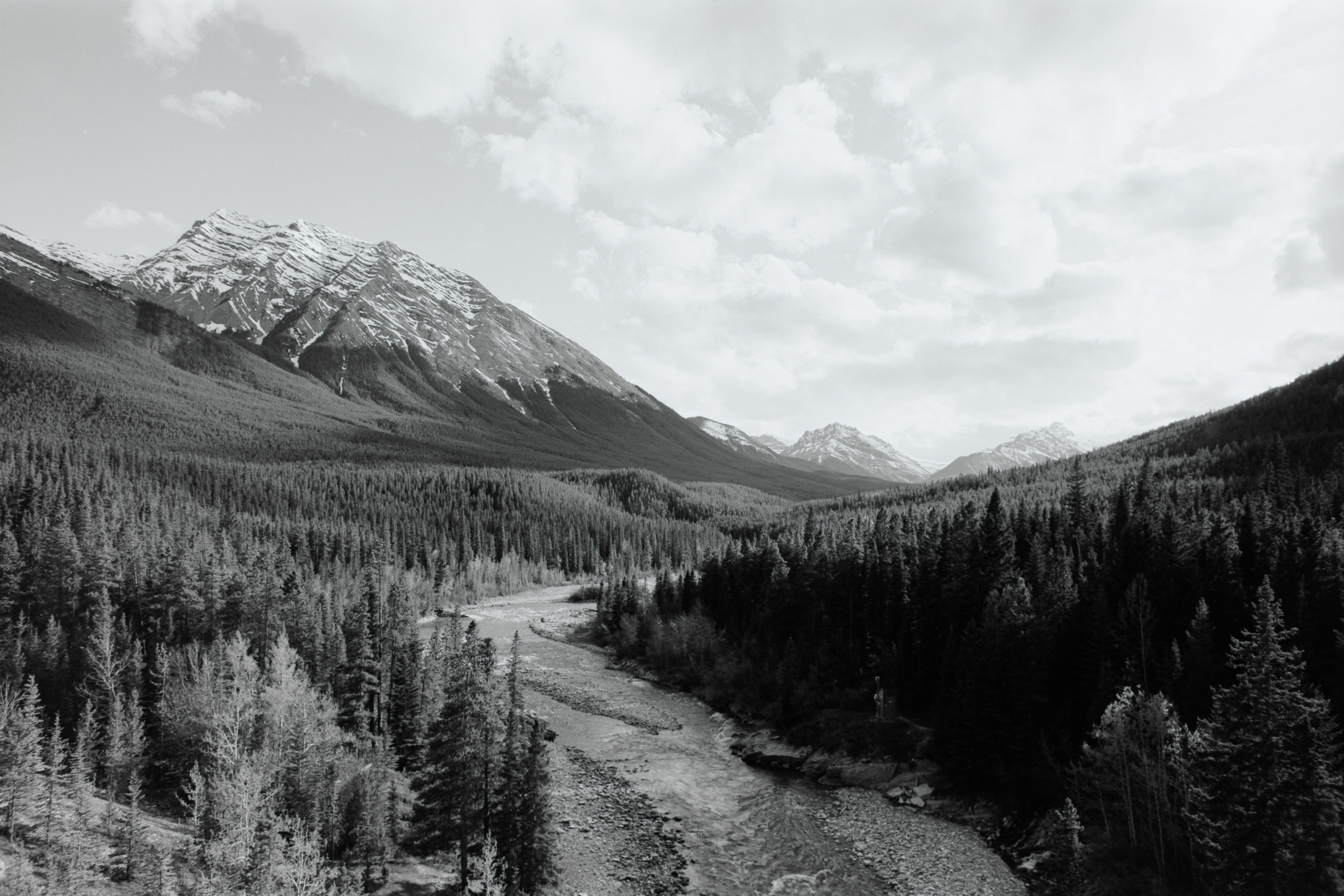
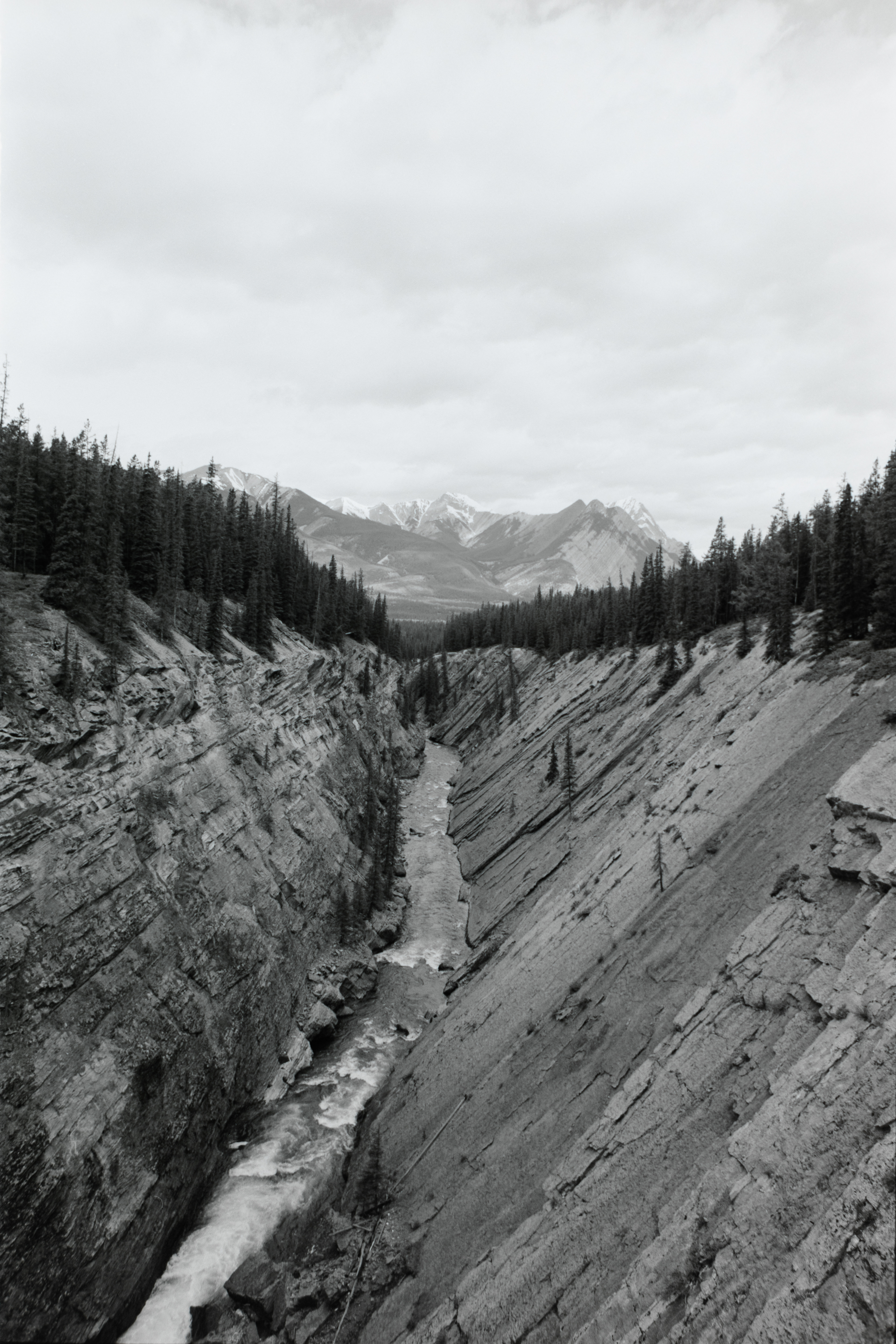


After getting home from camping, I couldn't wait to develop the roll and see how the shots came out. Right off the bat, I ran into a problem. Adox recommends specific developers for this film, none of which I had access to. No problem - I can just use what I currently have, right? Wrong. Along with their recommended chemicals, Adox specifically says not to use D-76 (which is the equivalent of Flicfilm's MQ Developer that I've been using). After some panicked research, I found next to nothing online about developing HR-50 with D-76. I even got in touch with Flicfilm to see if they had any experience (they're great folks over there, highly recommend!) but they hadn't tried the combo yet.
Not liking the idea of waiting to develop until I bought more chemicals for this specific roll, I thought it best to experiment. Using half-baked, ill-informed logic, I decided to develop HR-50 for 7 minutes, then follow my normal process for stop bath, fixer, and rinsing. It was thrilling taking the negatives out of the tank, seeing as I had no idea if they'd be totally underexposed or if I'd unleashed some other cause of ruin upon them.
To my surprise, they looked exceedingly normal - the only notable difference from other rolls being the super clear base of the film which is intended! While they dried, it became obvious that this film has quite a bit of contrast. After converting the images, this held true. I find it pleasing in many of the photos, however, there are times when the highlights get blown out or the shadows lose just too much detail. I sent a few samples to Flicfilm to pass along the results from my experiment and got some interesting thoughts from them - they noted how D-76 normally has great shadow details but that they're lost in this emulsion. With other developers (that are actually recommended) you may see better shadow detail and/or a greater dynamic range.
So, for all of you out there in the same desperate situation as I was in - I hope you find this post and it gives you some confidence to use D-76. Go for 7 minutes with your developer, you'll get good results I think.
Other than a bit of a light leak in the first few shots of the roll (light piping due to the super clear base of the film), things came together nicely with this roll. I enjoyed shooting it and would definitely consider buying another, though its strong contrast would make me more hesitant for certain situations. Here are some photos from the rest of the roll:
